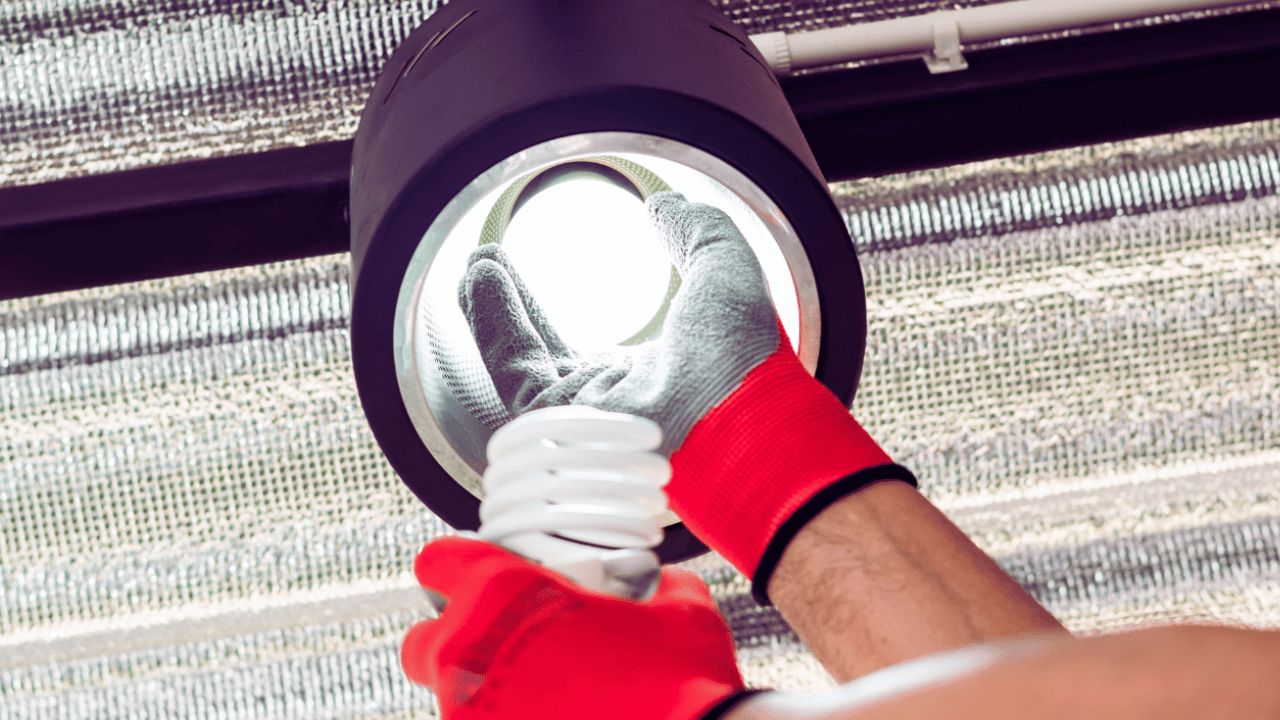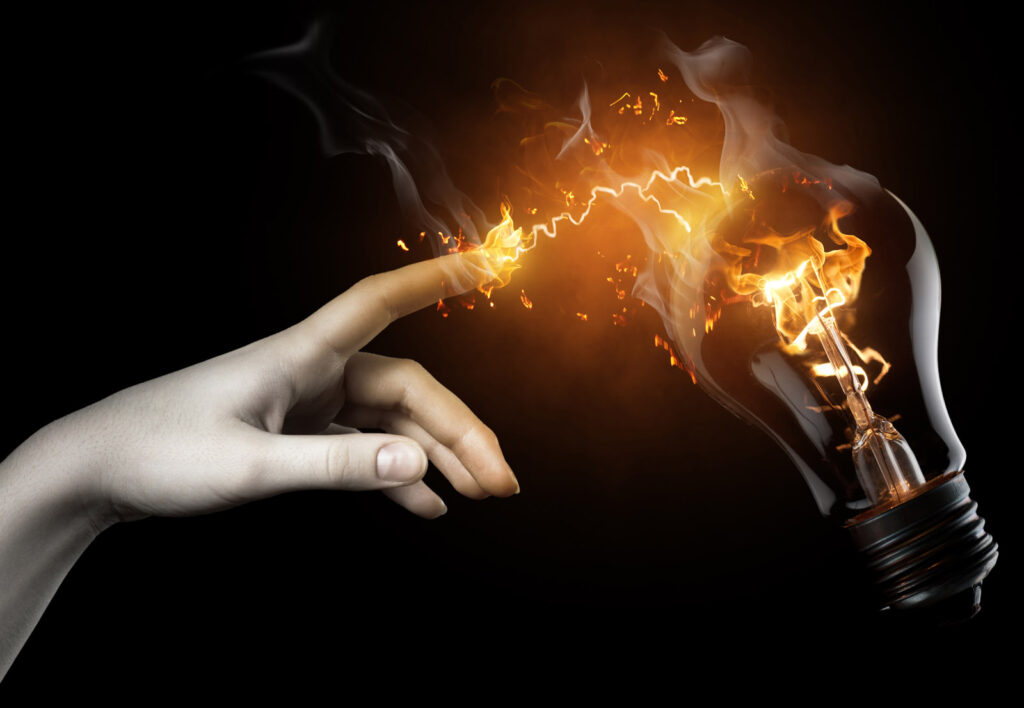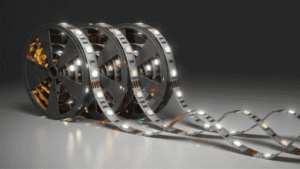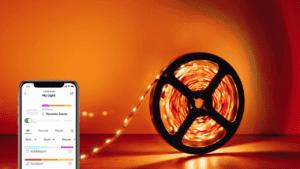
Covering LED lights is generally safe if the cover is heat-resistant and does not block ventilation. However, it is crucial to consider the manufacturer’s guidelines and not cover LED lights with materials that could cause overheating or damage the lights.
LED lights produce less heat than traditional lighting sources, making them safe to cover if certain precautions are followed. We will explore the safety aspects of protecting LED lights and provide guidelines to ensure a safe and effective lighting solution.
Covering the LED lights can help protect them from dust, moisture, and physical damage, extending their lifespan and maintaining their performance. However, it is crucial to use appropriate covers that do not interfere with the light’s heat dissipation, ensuring the lights remain cool and safe.
The Basics Of Led Lights
LED lights are generally safe to cover, but choosing suitable materials is essential. Using non-flammable, heat-resistant covers can help maintain the safety and longevity of LED lights while preventing potential fire hazards.
LED lights have gained popularity recently for their energy efficiency, long lifespan, and versatility. Whether you’re considering installing LED lights or already have them in your home or business, understanding the basics of LED lights can help you make informed decisions about their usage and safety.
In this section, we will explore different types of LED lights, how they work, and the benefits of using LED lights.
Different Types Of LED Lights
- Standard LED bulbs are commonly used in lighting fixtures and lamps. They come in various shapes and sizes to fit different applications.
- LED strips: LED strip lights consist of multiple small LED chips mounted on a flexible strip. They are often used for decorative purposes or as accent lighting.
- LED downlights: These recessed lights are famous for their sleek design and directional lighting capabilities. LED downlights are commonly used in kitchens, bathrooms, and commercial spaces.
- LED spotlights: LED spotlights are designed to provide focused illumination in specific areas. They are often used for highlighting artwork, architectural features, or outdoor landscapes.
Benefits Of Using LED Lights
- Energy efficiency: LED lights are highly energy-efficient, consuming less power compared to traditional bulbs. This can result in outstanding energy savings over time.
- Long lifespan: LED lights have a longer lifespan than traditional bulbs, often lasting up to 50,000 hours or more. This can reduce maintenance and replacement costs.
- Lower heat emission: LED lights produce very little heat, making them safer to use and reducing the risk of fire hazards.
- Environmentally friendly: unlike other lighting options, LED lights do not contain harmful substances like mercury. They are also recyclable, contributing to a greener planet.
- Versatility: LED lights come in various shapes, colors, and sizes, allowing for creative lighting designs and customized lighting solutions for different spaces.
Understanding the different types of LED lights, how they work, and the benefits they offer can help you make informed decisions about their usage and safety. Whether you’re considering LED lights for your home or business, their energy efficiency, long lifespan, and versatility make them famous.
Safety Concerns With LED Lights
LED lights are generally safe, but covering them can pose safety concerns. When covered, LED lights can generate excessive heat, which may lead to the risk of fire or damage to the light fixture. It is recommended to keep LED lights uncovered for optimal safety.
Understanding The Risks Of Covering LED Lights
LED lights have gained immense popularity due to their energy efficiency, longevity, and versatility. However, many people wonder if it is safe to cover these lights. Let’s delve into the safety concerns associated with covering LED lights and understand the potential risks involved.
Impact Of Covering Led Lights On Performance And Longevity
Covering LED lights can have a significant impact on their performance and longevity. Here are a few points to consider:
- Heat dissipation: LED lights generate heat while in use, and covering them can trap this heat, leading to overheating issues. Excessive heat can reduce the lifespan of the LEDs and affect their overall performance.
- Light output: Covering LED lights may obstruct the light output, causing reduced brightness and potentially affecting the desired lighting effect. It is essential to ensure adequate ventilation and avoid interfering with the light distribution properties of the fixture.
- Color temperature: LED lights come in various colors, ranging from warm to cool. Covering the lights can alter the color temperature and may not provide the desired lighting ambiance.
- Electrical connection: When covering LED lights, it’s crucial to ensure that the electrical connections are secured and protected against potential damage or accidents. Any loose connections or exposed wiring can lead to safety hazards.
Potential Fire Hazards
Covering LED lights improperly can pose fire hazards. Consider the following factors:
- Heat buildup: LED lights produce heat, and when covered without proper ventilation, the heat can build up and increase the risk of fire.
- Flammable materials: If the material used to cover the LED lights is flammable, it can ignite when exposed to heat, potentially causing a fire hazard. Always opt for non-flammable coverings or consult an electrician for suitable alternatives.
- Overloading: Covering LED lights can lead to poor heat dissipation, which may cause the fixture to overload and possibly result in a fire. Ensure that the cover does not hinder the heat dissipation capabilities of the LED light.
Impact On Energy Efficiency
Covering LED lights can also impact their energy efficiency. Consider the following:
- Increased energy consumption: When LED lights are covered, the trapped heat forces the LEDs to work harder to dissipate heat, leading to increased energy consumption. This can result in reduced energy efficiency and higher electricity bills.
- Diminished lifespan: Excess heat buildup caused by covering LED lights can accelerate the degradation of the LEDs, shortening their lifespan. This can result in more frequent replacements, leading to additional costs.

It is important to balance covering LED lights for aesthetic purposes and ensuring their safety and performance. Consult a lighting professional or electrician for expert advice on covering LED lights without compromising their safety or longevity. Safety should always be the top priority when working with lighting fixtures, including LED lights.
Are Led Light Covers Safe?
LED light covers are safe to use as long as they don’t obstruct the ventilation and are compatible with the LED light fixture. Following these guidelines, covering LED lights can help reduce glare and provide a softer light.
Examining Common Misconceptions
LED light covers are often mistakenly believed to be unsafe due to concerns about heat dissipation, color temperature, and light degradation. However, it’s important to separate fact from fiction regarding the safety of using covers on LED lights.
Let’s examine some of the common misconceptions surrounding LED light covers:
- LED lights covered by a heat-resistant material will overheat: LED lights are designed to produce very little heat compared to traditional incandescent bulbs. As long as the cover allows for proper airflow and ventilation, there should be no significant increase in temperature that could lead to overheating.
- Covering LED lights affects their color temperature and light output: While it is true that some LED covers can impact the color temperature and light output, this depends on the type of cover used. High-quality covers specifically designed for LED lights can preserve the color temperature while providing a diffused and consistent light output.
- LED light covers increase the risk of overheating and light degradation: LED light covers can help protect LED lights from dust accumulation, moisture, and physical damage. The risk of overheating and light degradation remains minimal as long as the cover is compatible with the LED light and does not obstruct heat dissipation.
Heat Dissipation And Ventilation
Proper heat dissipation and ventilation are crucial factors to consider when covering LED lights:
- Heat dissipation: LED lights produce heat but significantly smaller amounts than traditional bulbs. Heat dissipation is essential to ensure the longevity and performance of LED lights. Any cover used should allow heat dissipation, either through ventilation holes or a material that allows heat to escape.
- Ventilation: LED lights require sufficient airflow to prevent overheating. Choosing a cover that does not obstruct the airflow around the LED light is crucial. Ventilation holes in the cover or selecting a cover made from materials that allow air circulation can help maintain optimal operating temperatures.
Effects On Color Temperature And Light Output
The choice of LED light cover can have an impact on color temperature and light output:
- Color temperature: Some LED light covers can alter the color temperature, causing a shift in the perceived quality of light. However, high-quality covers designed for LED lights can minimize color temperature changes and provide consistent lighting.
- Light output: Poorly designed or incompatible covers may reduce the light output of LED lights due to obstruction or light diffusion. Choosing covers specifically designed for LED lights is important, ensuring optimal light transmission without compromising the light output.
Risk Of Overheating And Light Degradation
Concerns about the risk of overheating and light degradation when using LED light covers can be addressed by following these guidelines:
- Proper compatibility: Ensure the LED light cover matches the specific LED light model. More than adequately installed or ill-fitting covers may hinder heat dissipation and increase the risk of overheating.
- Quality materials: Opt for high-quality covers made from heat-resistant materials that allow for adequate heat dissipation. This helps to maintain optimal operating conditions and minimize the risk of light degradation.
- Regular maintenance: Inspect and clean the covers to remove any dust or dirt accumulation that may impede heat dissipation. This simple maintenance routine can help prevent overheating and ensure the longevity of the LED light and its cover.
LED light covers, when chosen and installed correctly, can enhance the aesthetics and functionality of LED lights while maintaining safety. Understanding the common misconceptions, considering heat dissipation, ventilation, color temperature, and light output, and taking proper precautions can ensure a safe and reliable lighting solution.
The Surprising Truth About Led Light Covers
LED light covers often raise safety concerns. However, rest assured, covering LED lights is generally safe if proper materials and safety precautions are observed.
Covering LED lights is a topic of much debate regarding safety. Many wonder if it is safe to cover LED lights and what precautions should be taken. In this section, we will explore the research and studies on the safety of covering LED lights, expert opinions and recommendations, common scenarios where covering LED lights is acceptable, and precautions to take when covering LED lights.
Research And Studies On The Safety Of Covering LED Lights
Researchers have conducted numerous studies to evaluate the safety of covering LED lights. These studies have shown that covering LED lights can affect their performance and longevity. When LED lights are covered, the heat generated by the bulbs can be trapped, leading to reduced efficiency and potential damage.
Additionally, covering LED lights can cause the lights to overheat, posing a fire hazard. It is important to note that not all LED lights are the same, and their safety may vary based on their design and specifications.
Expert Opinions And Recommendations:
- Lighting experts generally advise against covering LED lights due to the potential risks involved.
- Experts suggest that it is best to use LED lights without any covers or shades to ensure proper ventilation and prevent heat buildup.
- If covering LED lights is necessary, experts recommend using specialized heat-resistant covers designed specifically for LED lights.
- Furthermore, experts advise regular monitoring of covered LED lights to ensure they are not getting too hot or showing signs of damage.
Common Scenarios Where Covering Led Lights Is Acceptable:
- In certain situations, it may be acceptable to cover LED lights. These scenarios include:
- Using heat-resistant covers or diffusers designed explicitly for LED lights.
- Installing LED lights in enclosed fixtures that are designed to accommodate covers.
- Using covers for decorative purposes only and ensuring they do not obstruct the ventilation of LED lights.
Precautions To Take When Covering Led Lights:
If you decide to cover LED lights, it is important to take certain precautions for safety:
- Select covers that are specifically designed for LED lights and ensure they are heat-resistant.
- Do not use any materials that can easily catch fire, such as flammable plastics or fabrics.
- Regularly inspect the covered LED lights for signs of overheating or damage.
- Maintain proper ventilation around the lights to prevent heat buildup.
- If you notice any issues or concerns, consult a professional to ensure the safety of your covered LED lights.
Remember, while covering LED lights may be tempting for various reasons, it is crucial to prioritize safety and follow expert recommendations. By understanding the potential risks and taking necessary precautions, you can make informed decisions regarding covering LED lights in different scenarios.
Best Practices For Covering Led Lights
Covering LED lights is a safe practice when done correctly. Ensure proper ventilation, use fire-resistant materials, and avoid covering the entire surface to prevent heat buildup. Following these best practices will enhance the aesthetics without compromising the safety of LED lights.
LED lights are a popular lighting option because of their energy efficiency and long lifespan. However, there are instances where you may want to cover LED lights, whether for protection or aesthetic purposes. This section will discuss the best practices for covering LED lights to ensure their safety and optimal performance.
Recommended Materials For Covers
When it comes to covering LED lights, choosing the suitable materials to protect them while allowing them to function correctly is essential. Here are some recommended materials for covers:
- Acrylic or Polycarbonate Sheets: These materials are durable, lightweight, and offer excellent light transmission. They can be easily cut to the desired shape, allowing the LED lights to shine brightly.
- Diffusion Films: Diffusion films help spread the light evenly and reduce glare or hotspots. They come in various opacities and are great for softening the light output.
- Heat-resistant Plastic: LED lights produce heat, especially at higher brightness levels. Heat-resistant plastic covers can ensure the heat is dissipated effectively, preventing light damage.
Proper Installation Techniques
To cover LED lights safely, proper installation techniques must be followed. Here are some important considerations:
- Adequate clearance: Ensure enough space between the cover and the LED lights for heat dissipation. This will help prevent the lights from overheating.
- Secure attachment: Ensure the cover is securely attached to the light fixture to prevent shifting or falling off. This can be done using screws, clips, or adhesive tapes, depending on the type of cover and light fixture.
- Avoid obstructing vents: Make sure not to obstruct the built-in vents designed for heat dissipation in LED lights with their covers, as doing so will assist in preserving adequate airflow and averting overheating.
Regular Maintenance And Inspections
To guarantee the safety and optimal performance of enclosed LED lights, it is crucial to carry out routine maintenance and inspections. Here are some recommendations:
- Cleaning: Regularly clean the covers to remove any debris, dust, or dirt that may accumulate over time. This will help maintain optimal light output and prevent any obstruction.
- Check for damage: Regularly examine the covers for indications of harm, such as fissures or color alterations. Swiftly replace any impaired covers to prevent any potential impairment to the LED lights’ performance.
- Verify adequate ventilation: During inspections, ensure that the covers are not impeding the airflow around the LED lights. Proper ventilation is crucial for dissipating heat and maximizing the lights’ lifespan.
Ensuring Adequate Ventilation
Ensuring adequate ventilation to prevent overheating when covering LED lights is essential. Here are a few tips to ensure proper airflow:
- Use perforated covers: Opt for covers with small perforations or gaps to allow air to circulate around the LED lights. This will help dissipate heat and maintain optimal performance.
- Positioning: When installing the covers, ensure that there is enough space for air to flow freely around the lights. Avoid covering the lights too tightly, which can restrict airflow and lead to heat buildup.
Remember, following these best practices for covering LED lights will help maintain their safety, performance, and longevity. Please choose the suitable materials, install them properly, conduct regular maintenance, and ensure adequate ventilation for optimal results.
Frequently Asked Questions Of Is It Safe To Cover Led Lights?
Can Led Lights Be Covered?
LED lights can be covered without any issues.
Can You Cover Led Strip Lights?
You can cover LED strip lights to protect them from dust and prevent direct glare.
Is It Safe To Cover Led Lights With Tape?
Yes, it is safe to cover LED lights with tape as long as the video does not overheat and damage the lights.
Should Led Bulbs Be Covered?
Covering LED bulbs is not recommended as it can cause overheating and reduce their lifespan.
Conclusion
Covering LED lights may seem like a good idea to protect them or enhance their appearance, but it is important to consider the potential risks involved. While dimming LED lights can protect against dust and other external elements, it can also lead to heat buildup and reduced performance.
Choosing the right type of cover that allows for proper heat dissipation and does not impede the light output is crucial. Additionally, it is essential to follow manufacturer guidelines and consult experts if needed. Regarding safety, it is always better to be cautious and prioritize functionality over aesthetic preferences.
By making informed decisions and considering factors like heat dissipation, light output, and quality of the cover, you can ensure the safety and longevity of your LED lights.








